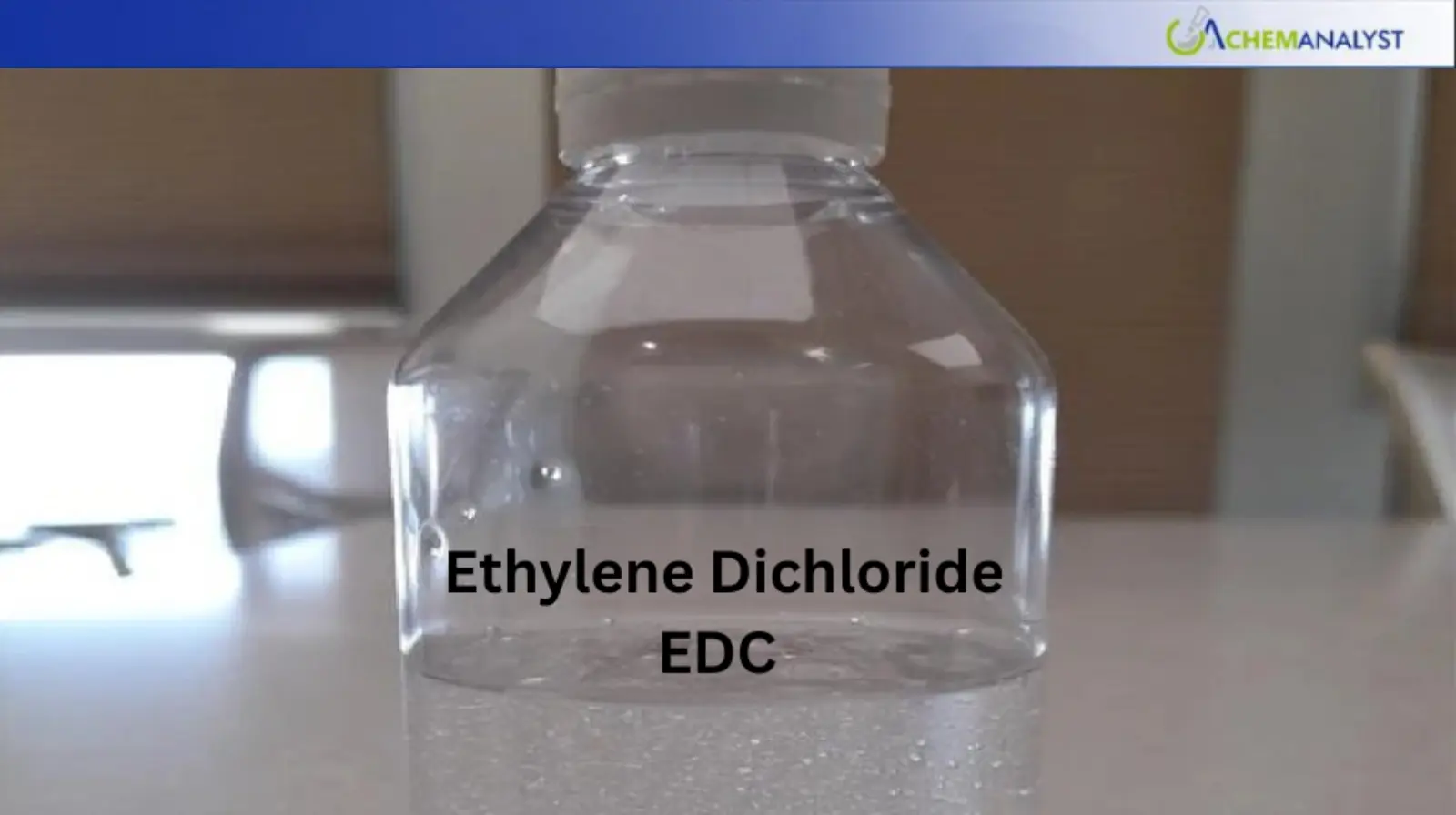Welcome To ChemAnalyst

The United States market for ethylene dichloride (EDC) maintained its price stability at the end of September 2025 because supply remained balanced with mixed demand patterns. The export values of EDC stayed constant due to consistent upstream ethylene pricing and steady operating rates, even though producers encountered rising costs for utilities and logistics. The downstream PVC sector maintained its negative influence because domestic demand stayed weak and inventory levels were high, which prevented any price increase. The upstream sector did not provide any assistance because U.S. Gulf ethylene values continued their week-on-week downward trend due to declining natural gas prices, along with high inventory levels and weak market demand. The major buyers, including China and Indonesia, and Belgium, showed minimal interest, which confirmed the existence of excessive supply in the market. The combination of weak construction demand and low global market interest kept EDC prices steady even though automotive activity and infrastructure development offered some support.
Key Highlights:
Ethylene dichloride (EDC) prices in the United States held steady during the last part of September 2025, even as a mixed signals scenario prevailed both domestically and overseas. Industry sources indicated that export offers of EDC were unchanged, remaining spot vinyl chloride monomer was unchanged as well. This stability was achieved despite the higher costs incurred by the manufacturing sector, which reflected the market's resilience amid skewed demand.
Trade flows during the first part of the year reflected this patchy scenario. U.S. shipments of EDC indicated firm overseas demand during the first quarter, as volumes increased from 92.3 thousand metric tons during January to a high spot of 105.1 thousand metric tons during March. Shipments, however, subsided during the second quarter, reaching as low as 72.1 thousand metric tons during April and then further dipping to 43.8 thousand metric tons during June, before making a partial recovery during July to 70.6 thousand metric tons.
Almost 559 thousand metric tons were exported during the first seven months of the year 2025, indicating continued dependency on global downstream vinyls and markets for PVC, although the demand patterns indicated volatility during the period up to the middle of the year.
The downstream polyvinyl chloride market remained a big burden on sentiment, as slow domestic demand picked up and high stocks inhibited significant positive movement for EDC. Producers indicated that although utility and logistically related costs had gone up, they had yet to reflect on the price front. On the other hand, the softening PVC market as well as price pressures from other markets kept the values of EDC suppressed, as the overall malaise affecting the chain would indicate.
Global supply fundamentals of EDC also contributed to the U.S. market. Large Chinese and Asian material volumes kept their sweet spot, international benchmarks in check, constraining U.S. export opportunities and damping price advances domestically. This overseas supply buildup contributed to the oversupply mindset, keeping EDC rangebound regardless of pressures along other parts of the production chain.
Upstream fundamentals offered no support for a rally. Ethylene spot prices in the U.S. Gulf retreated further. Weakness was caused by decreased natural gas, weakened domestic as well as international demand, as well as normal stock levels within the petrochemical complex.
In the longer term, based on the ChemAnalyst database, the U.S. EDC market scenario remains cautiously neutral. Although auto and infrastructure activity would provide some assistance to medium-term support to PVC demand, the short-term scenario in the EDC market is controlled by oversupply, soft construction sentiment, and liberal global competition.
We use cookies to deliver the best possible experience on our website. To learn more, visit our Privacy Policy. By continuing to use this site or by closing this box, you consent to our use of cookies. More info.
